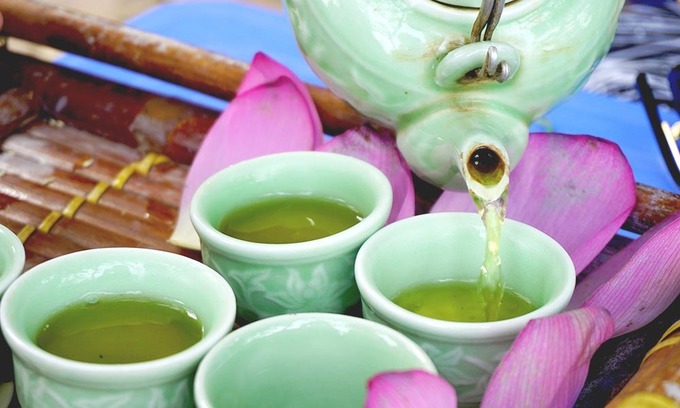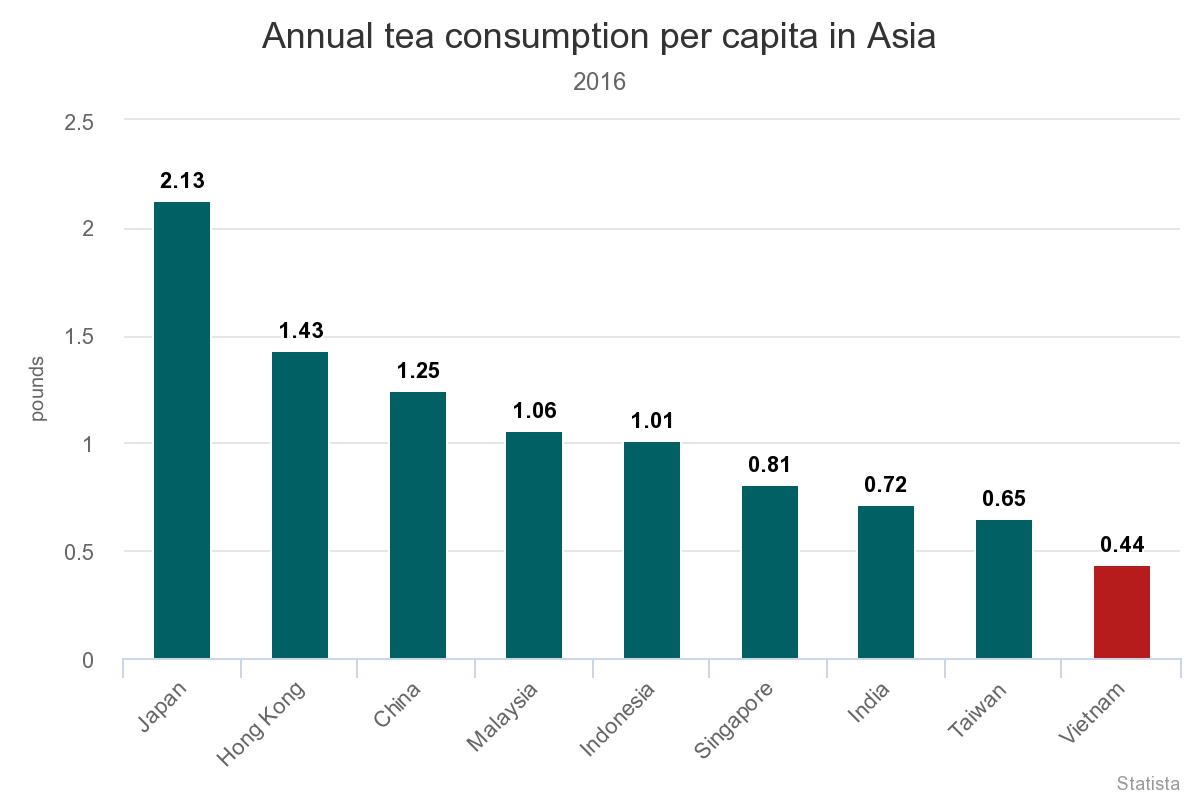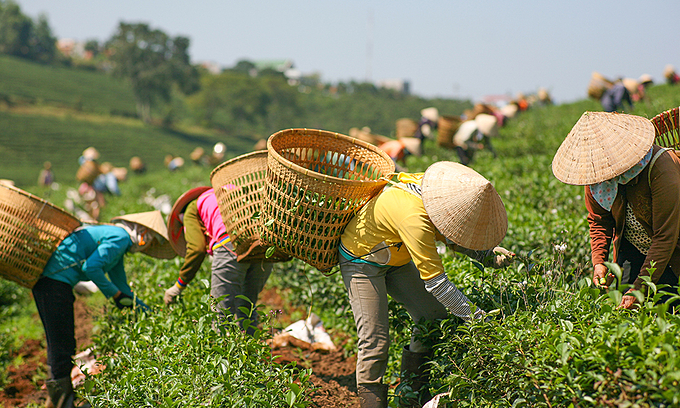Traditional tea losing flavor for young Vietnamese
Mon, 28 Oct 2019 14:18:00 | Print | Email Share:

Serving green tea to guests and drinking it all day is a vital part of Vietnamese culture, but that seems to be changing.
The last time Nguyen Anh Dung had traditional green tea was three months ago when he went to a wedding on Hanoi’s outskirts.
He drank one cup just to be polite to the elders there.
The 23-year-old Hanoi software developer said: "It’s not that I hate tea. It just lacks a distinct flavor and therefore not interesting enough to be a regular drink for me."
Dung’s go-to drink is instant coffee, of which he consumes two cups a day, while he orders bubble tea or coke when hanging out with friends.
"The ice and sugar in those drinks are what traditional tea lacks, which is a big shortcoming to me."
Tea used to be an indispensable part of Vietnamese culture, but young people like Dung, with coffee and cold milk tea as alternatives, are drifting away from the tradition.
Tea has been consumed in Vietnam for centuries by everyone regardless of their social or educational status. Most homes have a ceramic tea set, and a hot cup of tea is considered basic courtesy when a guest arrives. Farmers brew fresh tea leaves in a pot and carry it with them to the rice fields for the whole day.
But as the country opens its door, Vietnamese are getting to experience new beverages. Businesspeople now go to coffee shops for meetings, while young people consume tea with milk and sweetened beverages almost daily.
Though Vietnam is the world’s fifth biggest exporter of tea, consumption in the country is lower than in many other Asian countries. Vietnam’s annual tea consumption per capita in 2016 was 0.44 pounds (200 grams) compared to Japan’s 2.13 pounds, China’s 1.25 pounds, Malaysia’s 1.06 pounds, and Singapore’s 0.81 pounds, according to German statistics portal Statista.

Vietnam, which ranks seventh globally in tea production, has 257 producers and an output of 5,200 tons a day. It has 125,000 hectares under tea, but the area is declining. In the Central Highlands Lam Dong Province, one of the country’s biggest tea producing areas, the area shrank by 43 percent since 2016 to 11,500 hectares last year as farmers switched to more profitable crops.
As coffee and milk tea shops mushroom in major cities, outnumbering traditional tea shops, there is concern that the traditional drink is gradually losing its place as youths now prefer sweetened takeaways. It is estimated that the country consumed 5 billion liters of sweetened drinks last year, nine times the quantity consumed in 2000, according to the National Institute of Nutrition.
Tea researcher Do Quang Tuan Hoang said a typical traditional tea session takes about half an hour, which would be difficult to fit into the busy lives of youngsters today.
"Traditional tea requires pots, cups and other tools which could be too complicated for youths. High-quality tea is also expensive and hard to find," he told VnExpress International.
Nguyen Viet Bac, owner of a tea shop in Hanoi, said many young people today lack an understanding of traditional tea even though it is a vital part of their own culture.
"If given 30 minutes to talk about Vietnamese culture, including tea, to a foreigner, I think many youths would not know what to say."
Bac’s tea shop near Hoan Kiem Lake in downtown Hanoi is mostly visited by people over 30, and the number of customers it gets is a fraction of the crowd of youths at a coffee shop on the same street.
"Young people should know that they have a responsibility to learn about tea as part of Vietnam’s history."
Vo Thi My Hang, 25, a teacher, said she understands the cultural value of tea, but the time it takes to make a pot could daunt busy people.
"I know tea is more than just a drink, but young people are not patient enough for some downtime with it."

Women harvest tea in central highlands Lam Dong Province.
Photo by Shutterstock/Hentry Tran.
Some people are trying to revive and popularize tea among the younger generation with a more modern approach.
Teashop owner Vu Thien Tan in Hanoi began her first short-term teamaking course two years ago and has so far taught over 400 students, most of them born in the 1990s. By setting up a Facebook page, she has been able to reach a niche group of youths who are willing to put down their smartphones for some cultural experiences.
"Young people do care about traditional tea if given an opportunity to discover their own culture."
But for Dung, the software developer in Hanoi, while a tea course sounds interesting, he will not join.
"The idea of cleaning the tea set discourages me."
By: Dat Nguyen/Vnexpress
---------------------------------------------
Same category News :













